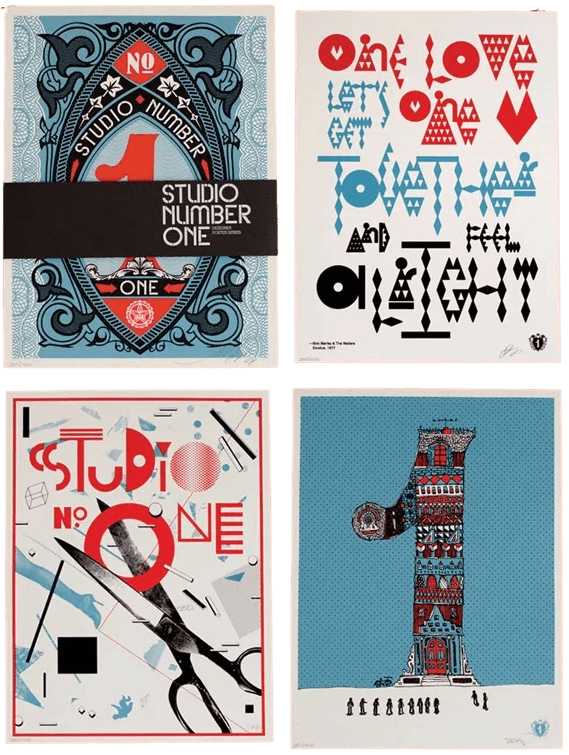
Street Art as an Investment: What Collectors Should Know in 2025
Street art has evolved from a rebellious underground movement to a dominant force in the contemporary art market. Once dismissed as ephemeral, works by street artists like are now commanding millions at major auction houses.

Street art has evolved from a rebellious underground movement to a dominant force in the contemporary art market. Once dismissed as ephemeral, works by street artists like Banksy, KAWS, and Shepard Fairey are now commanding millions at major auction houses. As we enter 2025, the global street art scene is more dynamic than ever, presenting exciting opportunities for collectors and investors alike.
Whether you're looking to buy your first piece or expand your collection, here’s what you need to know about investing in street art today.
Why Street Art is a Strong Investment
1. Increasing Auction Valued
Street art has seen record-breaking sales in recent years, with Banksy’s Game Changer selling for over $23 million in 2021 and KAWS' The KAWS Album fetching $14.8 million. As demand grows, secondary market prices for emerging and established street artists continue to rise.
 Banksy, Girl With a Balloon
Banksy, Girl With a Balloon2. Cultural Relevance & Mass Appeal
Unlike traditional fine art, street art connects deeply with contemporary culture, making it highly sought after by younger collectors. The accessibility of murals, prints, and limited editions allows a broader audience to engage with and invest in the movement.
 Shephard Fairey
Shephard Fairey3. Limited Edition & Scarcity Factors
Many street artists release limited-edition prints or small-scale sculptures, creating scarcity that drives up value. KAWS, for instance, releases vinyl figures in controlled quantities, fueling demand in the resale market.
4. Public & Institutional Recognition
Museums and galleries worldwide are now showcasing street art, legitimising its place in art history. Institutions like MoMA, the Tate, and Centre Pompidou have exhibited works by Keith Haring, Jean-Michel Basquiat, and other street art pioneers, further elevating their market value.
5. Expanding Global Market
Cities like Berlin, London, São Paulo, and Tokyo have become street art hubs, attracting collectors from around the world. With increased global interest, emerging artists from new markets are gaining recognition, offering fresh investment opportunities.
2025 Trends in the Street Art Market
1. Digital & NFT Street Art
The fusion of street art with blockchain technology continues to evolve. Artists like Beeple and XCOPY have introduced new ways to authenticate and sell digital works, opening up fresh investment avenues.
2. Brand Collaborations & Commercial Success
From high-fashion partnerships (like KAWS x Dior) to sneaker collaborations (like Shepard Fairey x Nike), street artists are extending their reach into mainstream consumer markets, increasing the value of their physical works.
3. The Rise of Female & Non-Western Artists
Artists such as Faith XLVII, Futura, and Swoon are gaining market traction, bringing more diversity and fresh perspectives to the street art investment space.
4. Sustainability & Ethical Art Markets
With growing awareness of ethical collecting, investors are seeking transparent marketplaces that ensure artists benefit from secondary sales. This shift is paving the way for fairer art trading platforms.
The Role of FairArt in the Street Art Investment Boom
As the secondary art market for street artists grows, FairArt is emerging as a game-changer in how collectors buy, sell, and trade art while ensuring artists receive fair compensation.
What is FairArt?
FairArt is a next-generation marketplace designed to disrupt the traditional secondary art market by prioritizing artist royalties and transparent transactions. Unlike traditional auction houses, which often cut artists out of resale profits, FairArt ensures that creatives continue to benefit from their work’s long-term success.
Why FairArt is Essential for Street Art Collectors
- Ensures Artist Royalties: A fairer resale model means that artists receive a percentage of future sales.
- Authenticity & Transparency: Eliminates forgery risks with verified provenance tracking.
- Access to Emerging Talent: Supports up-and-coming street artists alongside established names like Banksy and KAWS.
- Print & Limited-Edition Focus: Street art thrives on prints and limited releases—FairArt provides a structured platform for collecting these assets responsibly.
With FairArt, investors can confidently engage in the street art market while supporting the artists who define the movement.
Final Thoughts: Why Now is the Time to Invest in Street Art
Street art has moved beyond the walls of city streets to auction houses, museums, and digital spaces. In 2024, its investment potential is stronger than ever, driven by cultural significance, market growth, and increasing institutional recognition.
For collectors looking to navigate this dynamic market, platforms like FairArt provide a more ethical and artist-friendly way to invest. Whether you’re after an original mural, a limited-edition print, or a rare collectible, the time to explore street art as an asset is now.
Shop Street art at https://fairart.com/
